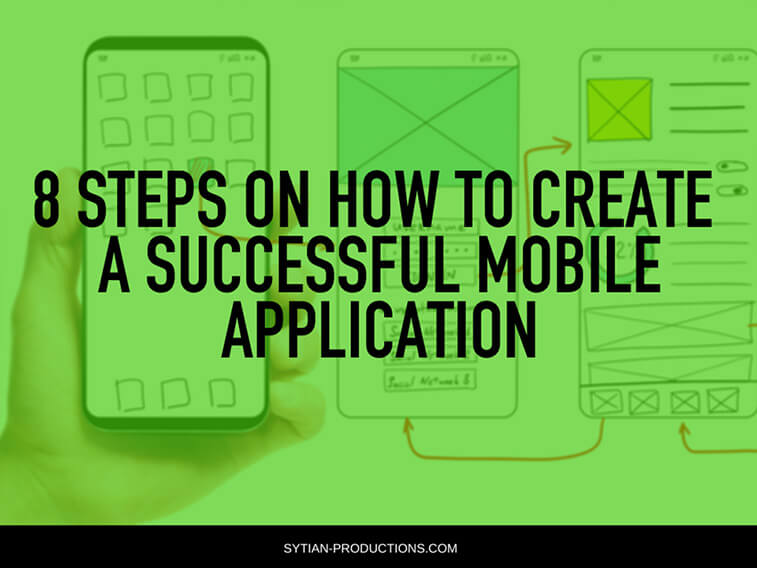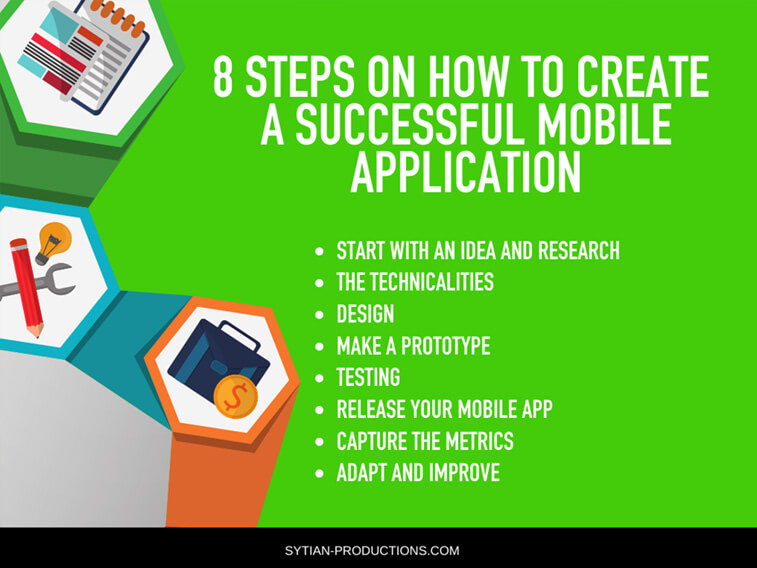8 Steps on How to Create a Successful Mobile Application

Having a mobile application is a wonderful thing for your business. Not only you will get more potential customers but you are building their trust and loyalty to your brand. By thinking and prioritizing your customers’ convenience and ease of access to your digital store, you are giving them more reasons to shop and avail of your products and services. But not all mobile applications are created the same. If you want to succeed in the digital platform and create a successful mobile application for your business then we have 8 steps we recommend you follow.
-
Start with an idea and research
A good idea is always the foundation of a good business strategy and it applies to creating a mobile application too. First of all is you have to identify what problems you are trying to fix, or what features you are trying to make more accessible. Enumerate the benefits your customers will gain by using this new app. You can identify these things by analyzing your existing market and existing modes of accessibility. If you have a website, what is missing or what is the problem with it that can be resolved by a mobile app. Also, a good idea is always backed up with thorough market research. Find out who your competitors are and how they are dealing with the digital market and their strategy. Think like a customer and research their strengths and weaknesses. What makes them sell or otherwise? Once you do your research you will find out what mistakes you have to avoid and you can also double on the strategies that work. Ensure that your mobile app stands out from the rest because there are hundreds and thousands of mobile apps in the market.
-
The technicalities
Before you start creating your mobile application you should be clear on your vision to be able to channel it into something tangible with your new application. First, determine your target users, what are their needs and how can you give it to them. Check with what platforms are used by your potential customers and the devices they use to narrow down which should you base your mobile app so you can focus on a model before expanding. Also, check with your developer on their approach to generate revenue from the mobile app. You can utilize your app not just for your customers’ purchases but also for using other features and advertisements on your app. After you have pinned down the technicalities for your application, know how much you are willing to spend on the development, release, and marketing of your mobile app. By setting a budget you will easily see your gains from creating one in the first place.
-
Design
You should keep in mind that design is one of the most significant things you should focus on creating a mobile application for your business. It is not just the look or the aesthetics of the mobile application but its user experience. Discover what features should apply to your app and how users will gain more convenience through your app. The UI design will determine if your customers will keep on using your mobile app. Remove all the frustrating details and make transactions a breeze by creating a UI design that has a smooth flow from browsing to check out. Once you create a great design, your customers will automatically enjoy using your app and making purchases. Most apps fail because they fail to keep in mind the smooth use of customers as a primary factor in creating the mobile app. Sometimes less is more when the features are properly executed instead of cramming all features in your app.
-
Prototype
Once you have discussed all the features and designs with your developer it is now time to make a prototype of your app. This is where you turn your ideas into a tangible application that can be tried and tested by your testers as well as you can now pitch this to potential investors. Having a prototype is the start of the next step for your business. This is where your ideas manifest and your potential investors have a tangible app that they can try instead of only imagining your ideas.
-
Testing
Utilize your prototype by having your app tested by beta testers that will mimic feedback from your potential users. Have testers that are of the same demographic as your potential customers so that you can get the same possible feedback. This way you can gauge if you are hitting your goals for your mobile application. Check if you fully understand your target market and if it is translating to your mobile application. This reduces risks once you launch your app. Also, this is the time to test your mobile application to different devices, connections, and platforms to ensure there are no bugs and that everything is working perfectly and smoothly.
-
Release your mobile app
Once your mobile app is created and tested it is now time to release it to the public. Just as the creation of the app requires planning and research, the same with its release. Plan how you will release your new app and ensure that there are plenty of potential customers who will witness its launch to gain more visibility for your app. Know your marketing strategy and how you will engage with your customers so they will get the first launch of your mobile app.
-
Capture the metrics
Do not stop with just releasing your app, make sure you are collecting the metrics that will determine if your app is accomplishing your goals. Analyze what aspects and features of your app are capturing your customers, what makes them stay, and what are their experiences and behavior with your mobile app. Determining what features work and what doesn’t will help you plan and make changes in the future.
-
Adapt and improve
Once you have all the metrics and feedback with your app it is important to continuously adapt and improve. Make the changes that will deal with the problems your customers are experiencing in your app. Also, improving your features and offers will benefit your business in the long run. Doing these steps will ensure you have a successful mobile application for your business.
